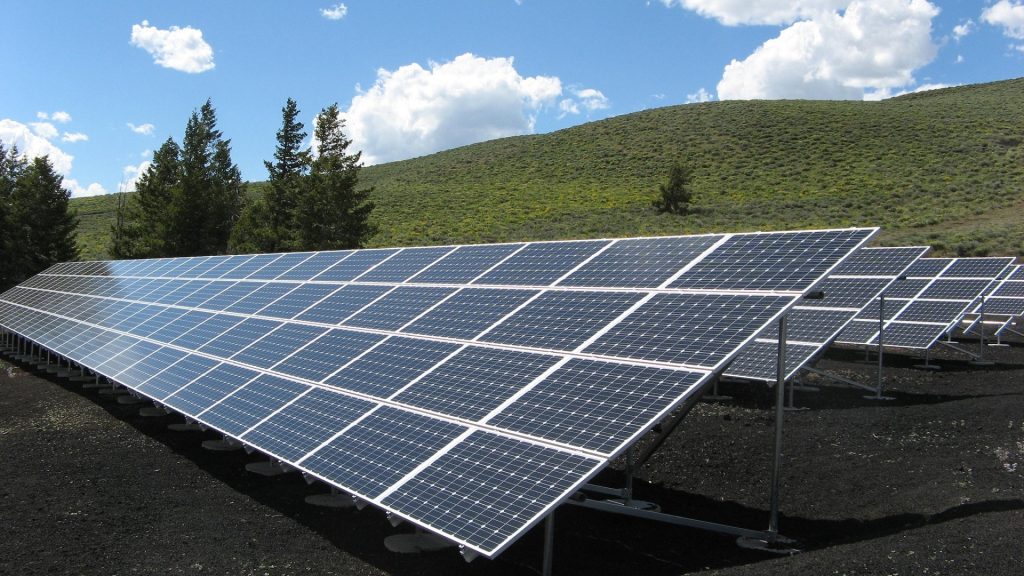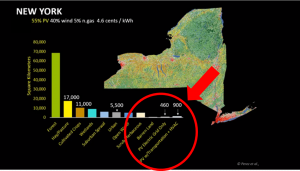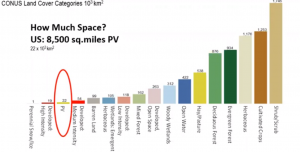
Just How Much Land Is Needed For Community Solar?
Our goal at U.S. Light Energy is to expand access to clean, renewable solar energy to everyone, including low- and moderate-income residents, all while building a stronger and more resilient distribution electrical grid, starting in our home state of New York. We can achieve this through the development of more community based solar projects. With a Community Solar Array, anyone who receives an electric utility bill (homeowners, business owners and renters) can become a subscriber of the solar array, thereby taking advantage of cost savings and environmental benefits, and also helping to create more renewable energy in the state.
The decarbonization of New York’s power grid is a lofty goal and the development of solar projects requires resources such as time, expertise and financial investment. But most importantly, it requires land. That’s why we partner with landowners through our Solar Land Lease program, providing much needed revenue and tax relief to landowners who have underutilized or otherwise unusable land.
But just how much land do we need?
How much land would it take to meet 100% of New York’s electricity needs from solar energy alone?
Dr. Richard Perez, Senior Research Associate with the University at Albany’s Atmospheric Sciences Research Center, has already crunched the numbers. Based on his estimates, which assume overdeveloping by about 100% for grid reliability, we’ll need approximately 850 square kilometers (km2) of solar development to meet 100% of New York’s electrical grid needs. If we expand that to all energy usage including transportation, heating, etc., that number increases to about 1,600 km2.
That sounds like a lot but let’s put it into perspective.
 New York State currently has about 5,000 km2of scrubland. And equal amounts of high-density urban areas and suburban sprawl. There are over 17,000 km2of hay and pastureland in New York, and nearly 70,000 km2of forests. In fact, we already use about 530 km2just for golf courses!
New York State currently has about 5,000 km2of scrubland. And equal amounts of high-density urban areas and suburban sprawl. There are over 17,000 km2of hay and pastureland in New York, and nearly 70,000 km2of forests. In fact, we already use about 530 km2just for golf courses!
But it gets even better. Dr. Perez also proposes that an energy mix of approximately 55% solar, 40% wind and 5% natural gas would minimize electricity costs. Under that scenario, we would need just 460 square kilometers of solar to meet our electricity needs (that’s less than we already use for golf!) or 900 km2 to meet all of our energy needs.
 On a national scale, the numbers look even better. We would need about 8,500 square miles, or 22,000 km2 to meet 100% of our national electricity needs. That’s compared to 99,000 km2 of barren land, and 538,000 km2 of pastureland and over 9,000 km2 of parking lots. In fact, we have already created nearly 40,000 km2 of artificial lakes and reservoirs for hydropower in the US. producing roughly 5% of our electricity needs. That’s twice the area needed for solar to produce 100% of our electricity needs.
On a national scale, the numbers look even better. We would need about 8,500 square miles, or 22,000 km2 to meet 100% of our national electricity needs. That’s compared to 99,000 km2 of barren land, and 538,000 km2 of pastureland and over 9,000 km2 of parking lots. In fact, we have already created nearly 40,000 km2 of artificial lakes and reservoirs for hydropower in the US. producing roughly 5% of our electricity needs. That’s twice the area needed for solar to produce 100% of our electricity needs.
So, is a lot of land needed?
Yes, of course. But by comparing solar land use to other uses – both in New York and nationally – we get a better understanding of how this fits into the larger picture, and make a more informed decision about how we can put our land to the best use.
Want to double check our work? Feel free to check out our sources, including:
Dr. Perez’s presentation to the United Solar Energy Supports of New York, at https://www.youtube.com/watch?v=yG-9cxu9Mk0
The Department of Energy’s State of NY Energy Sector Risk Profile at https://www.energy.gov/sites/prod/files/2016/09/f33/NY_Energy%20Sector%20Risk%20Profile_0.pdf
Data regarding golf courses and their approximate size, at https://www.top100golfcourses.com/golf-courses/north-america/usa/new-york#
Data regarding parking lots and their approximate size, at https://www.nytimes.com/2012/01/08/arts/design/taking-parking-lots-seriously-as-public-spaces.html
More great information about how land is used in NY, not included in this post, can be found at https://web.osc.state.ny.us/osdc/rpt21-2010-agriculture-in-nys-economy.pdf
